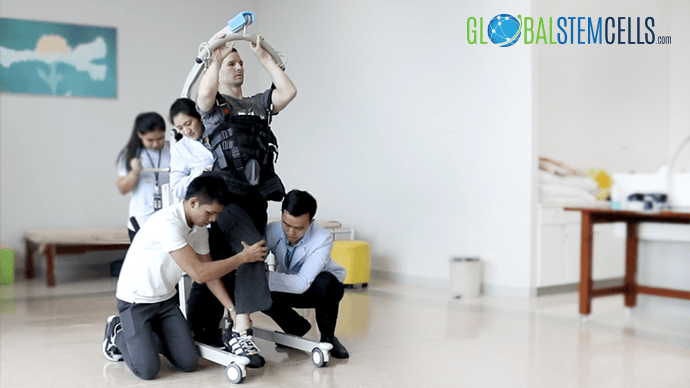The life-changing procedure that brought him across the globe.
In dealing with many patients with spinal cord injuries, we see and often feel the frustration that they have to deal with every day. Because in many cases their injuries are a big part of the daily grind. But even in the face of such adversities, SCI patients show tremendous strength and positivity, and it makes us feel thankful. They refuse to give up and given that there have been so many positive breakthroughs in treating paralysis, they have no reason to.
Earlier this year, we qualified a young Canadian named Isaac Darrell into the epidural stimulation program for his SCI. A few years ago, he had a diving accident that damaged his spine and left him without the use of his legs. He approached Global Stems Cells to learn more about his options through us and decided that a trip to our facilities in Bangkok was the best course of action for him. Now you can imagine the range of emotion he felt when he arrived at the hospital and spoke to our doctors. You’d feel excited and curious, but nervous and very carefully optimistic. Isaac was no different.
If you’re new to epidural stimulation, we’ll quickly explain how exactly we were going to help our young new patient.
Epidural stimulation is multi-step process that involves implanting a small device that is designed to bridge your brain’s signal with the affected nerves in your spine. It delivers low-frequency currents to specific nerve segments to stimulate motor function. Using mesenchymal stem cells to activate a healing response to the area of the injury. Then, the mapping process ensures that the device to will get a response from affected areas to the corresponding actions. Sounds pretty intimidating, right? Isaac thought so at first, but once his surgery was completed he understood just how simple and non-invasive the whole process was. Then, doctors turned the device on.
Dr. Nasir, Isaac’s lead specialist during his treatment, recalled how his patient and his mother felt when they witnessed him moving his legs for the first time in four long years.
… It was the first time he (Isaac) was moving his legs in four years, so it was very emotional”
Now that’s something that’s sure to lift anyone’s spirits. But the journey wasn’t over, it was time for a few weeks of physical rehabilitation.
Mr. Darrell was assisted by a team of specialists that helped him at every level of his recovery. Localised pain and blood pressure were regulated by acupuncture and his core and trunk strength were increased with exercise, conditioning and therapy. Things were going great, so great that with each passing day, Isaac could stand using parallel bars for longer durations. He had more energy, his range of motion had improved, his autonomic dysreflexia had also improved, and his confidence was sky-high. And to his team at the hospital, it was wonderful to see.
During his final days, Isaac sat with us as he had many times during his stay. He was different than when he first came to us, he had renewed vigor. He described what it was like during his stay and talked about how great it was to take his first unassisted steps since his accident years ago. He was happy he did this. And we were thrilled to see how far he’d come in a few short weeks.
It’s changed my life for the better and I believe that it will change yours, because the results speak for themselves”



 English
English